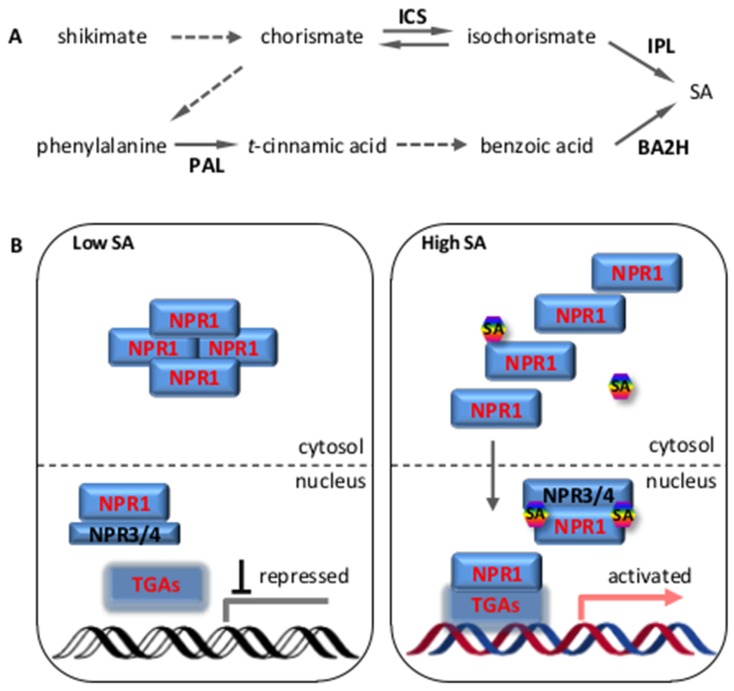Figure 1.
Salicylic acid biosynthesis and signaling pathway. (A) Proposed model for salicylic acid (SA) biosynthesis in Arabidopsis. Upper panel: the isochorismate pathway revealed by genetic studies. Lower panel: the phenylpropanoid pathway revealed by biochemical studies. (B) A simplified model for the SA signaling pathway according to Ding et al. [18] and Mou et al. [19]. In cells with low SA levels, NPR1 forms oligomer and remains in the cytosol, NPR3 and NPR4 bind residual NPR1 in the nucleus to prevent NPR1 function. In cell with high SA levels, NPR1 becomes monomeric and enters the nucleus, where SA binds to NPR3 and NPR4 to block their transcriptional repression activity. NPR1 interacts with TGAs in SA-responsive promoters, leading to the activation of defense responses. Abbreviations: BA2H, benzoic acid 2-hydroxylase; ICS, isochorismate synthase; IPL, isochorismate pyruvate lyase; NPR, non-expresser of pathogenesis-related genes; PAL, phenylalanine ammonia lyase; SA, salicylic acid; TGA, TGACG-binding factor.

